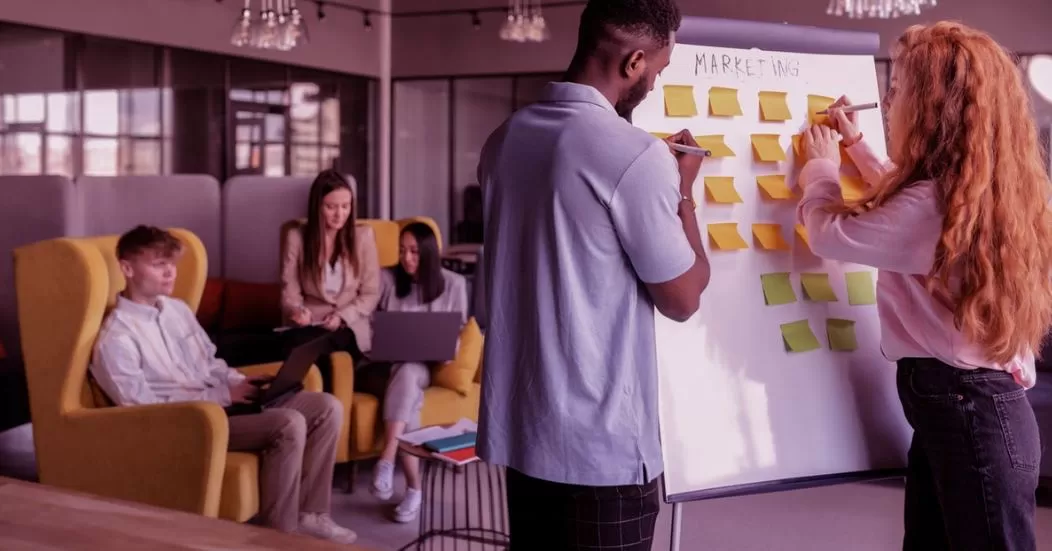Event marketing is the process of informing people about the presence of an event you’re presenting and persuading them to attend. There is no doubt that marketing has become more complicated than ever. In the past, if we spent enough money on advertising an event on a prominent TV channel’s prime-time schedule and professional small business flyers, we were virtually guaranteed success.
We must integrate many offline and online media in a unified effort to reach our marketing goals. While we’ll be focusing on how to utilize social media to advertise our events in this guide, we’ll also need to think about other platforms and best practices. Here are a few of the most crucial event marketing guiding principles to remember:
- Establish Event Marketing Objectives
- Useful Press Releases for the Event
- Email Marketing That Works
- Use a professional website for your event.
- Establish a marketing timeline
- Consider who you’re trying to reach.
Social Media Tips and Tricks for Promoting Events
As we can see from the marketing timetable outlined above, successful social media marketing for an event entails reaching out to individuals on social media prior, during, and after the event. We’ll go through different social media promotion tactics at various stages of event marketing in the sections below, but first, let’s talk about which social networks you should concentrate on. Here’s a quick rundown of common social media networks to think about:
- YouTube
- TikTok
Before the event, here are some strategies you may use to raise awareness and attract possible guests:
Create a simple, easy-to-remember hashtag for your event
It is advisable to strike the correct balance between uniqueness and familiarity. Your hashtag should be knowledgeable enough for target attendees to understand your event right away. You’ll want to include the hashtag in a slightly shorter URL, and you’ll also want to keep in mind the character limit on platforms like Twitter.
Optimizing your accounts and bolstering your presence are important aspects of using social media to advertise your event. To communicate professionalism, use the PosterMyWalltool to create well-designed images in your profiles and posts and update your bio with improved headers and descriptions.
Use Instagram Stories to your advantage
The option to apply a Countdown Sticker on Instagram posts is a relatively new tool ideal for announcing the start of your event. You can change the countdown’s color and name to match your event’s branding and specify an end date and time. You may use the Countdown sticker in a variety of ways, such as promoting the early bird pricing cutoff to encourage additional ticket sales or if you want to host competitions or giveaways.
Video Previews
You may raise awareness by posting short films on Instagram, Youtube, Twitter, and other social media sites. I’ve usedPosterMyWallsoftware to create appealing video teasers that give valuable information to the target guests, which may persuade them to register.
Organize freebies and contests
Giveaways and contests on social media are prominent because they increase engagements and interactions. The more interactions you receive, the higher your brand recognition will be, and as a result, more of your viewers will become genuine attendees. You may also ask your sponsors to join in these giveaways if you have any.
It’s also crucial to post about the event on your social media platforms while it’s going on. While it is unlikely to help you increase the number of attendees (unless perhaps for virtual/hybrid events), it can help you boost attendee happiness and build your overall brand. Here are some pointers:
Live posts
Twitter is beneficial as a real-time social network for providing live coverage of an event. Use your event theme hashtag in all of your posts, and take advantage of the ability to interact with participants in real-time. Guests may submit questions or concerns about the event, so watch your feeds.
To create a coherent experience, you may broadcast relevant social media postings in real-time on your event’s primary display. There are various ways to do this; for example, you may display relevant questions from listeners on the screen so that the present speaker can address and respond to them in real-time.
It is a multi-layered strategy that can be difficult to implement but powerful when done correctly. To begin, you must encourage participants to create user-generated content. It might be as easy as inviting people to use your unique on-site photo booth to capture and publish a photo of themselves. You may, however, be more inventive and employ more unusual methods. Second, use your social media profiles to promote this user-generated content.
Obtain feedback
Reconnect with folks who attended your event, particularly those who discussed or participated with the social media pages for your event. You can thank them and wish them a safe journey home, but you should also urge them to provide feedback and express their concerns (even complaints). Send a post-event survey via DMs if necessary to wrap up loose ends. You’ll be astonished at how powerful this may be in fostering long-term partnerships.
Final Thoughts
Remember that social media promotion of your event does not end once it begins. Developing and maintaining buzz before, during, and after the event is also crucial to the event’s success. Last but not least, if you would like to learn more tips and tactics for making your event appealing, click here.
